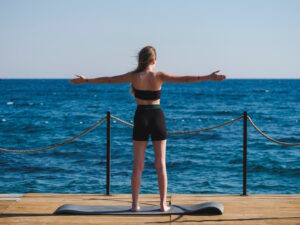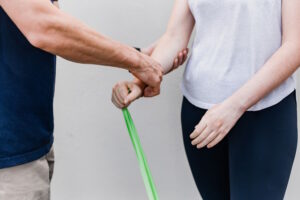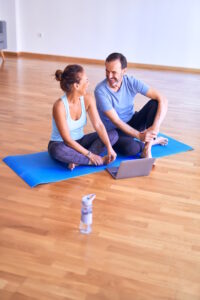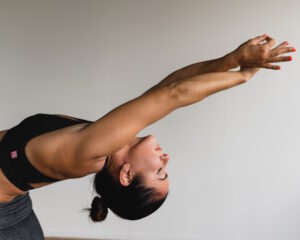
As an office worker, spending long hours at a desk can take a toll on your body, leading to discomfort, stress, and postural imbalances. Incorporating Pilates exercises into your routine can be highly beneficial in alleviating desk-related aches and promoting overall well-being. In this article, we will explore the advantages of Pilates for office workers and discuss specific exercises that can be done at the desk to reduce stress and pain. Additionally, we will address the types of exercises suitable for individuals with desk jobs and provide tips on stretching to alleviate back pain.
Is Pilates good for office workers?
Yes, Pilates is excellent for office workers. It offers a wide range of benefits that specifically target the challenges faced by those who spend prolonged periods at a desk:
1. Posture improvement: Pilates exercises focus on core strength, spinal alignment, and postural awareness. By strengthening the core muscles and promoting proper alignment, Pilates helps correct the postural imbalances that often result from prolonged sitting.
2. Increased flexibility: Desk work can lead to muscle tightness, particularly in the neck, shoulders, and hips. Pilates incorporates stretching and lengthening movements, enhancing flexibility and reducing muscular tension.
3. Core strengthening: Pilates places a strong emphasis on strengthening the deep abdominal and back muscles, collectively known as the core. A strong core improves stability, reduces the risk of injury, and supports good posture while sitting.
What is one exercise that workers can do at their desk to help them reduce stress and pain?
One simple and effective exercise that office workers can do at their desk is the seated spinal twist:
1. Sit tall in your chair with both feet flat on the floor.
2. Place your right hand on the outside of your left thigh, near the knee.
3. Inhale to lengthen your spine, and as you exhale, gently rotate your torso to the left, using your right hand to deepen the twist.
4. Hold the twist for a few breaths, feeling the gentle stretch through your spine.
5. Repeat the twist on the opposite side, placing your left hand on the outside of your right thigh.
This seated spinal twist helps release tension in the spine, stretches the muscles of the back and hips, and promotes a sense of relaxation.
What kind of exercises should I do if I sit at my desk all day?
If you have a desk job and spend most of your day sitting, incorporating these exercises into your routine can help counteract the effects of prolonged sitting:
1. Desk stretches: Perform gentle stretches for your neck, shoulders, wrists, and hips while sitting at your desk. These stretches can help relieve muscle tension and improve flexibility.
2. Standing breaks: Take regular breaks to stand up, walk around, and stretch. Even a short walk or some standing exercises can help improve circulation, relieve stiffness, and rejuvenate your body and mind.
3. Core exercises: Engage in exercises that target your core muscles, such as seated abdominal contractions or pelvic tilts. These exercises can be done discreetly while seated and help maintain core strength and stability.
How do you stretch back pain at a desk job?
To stretch back pain while at a desk job, consider the following:
1. Seated forward fold: Sit on the edge of your chair and fold forward from your hips, allowing your arms to reach toward the floor. This stretch elongates the spine, releases tension in the back muscles, and can provide relief for back pain.
2. Cat-Cow stretch: Place your hands on your thighs while sitting upright. Inhale, arch your spine, and lift your chest forward (cow pose). Exhale, round your spine, and tuck your chin toward your chest (cat pose). Repeat this gentle movement to stretch and mobilize the spine.
3. Shoulder stretches: Interlace your fingers behind your back, straighten your arms, and gently lift your hands away from your body to stretch the shoulders and chest. Alternatively, bring one arm across your chest, using the other arm to support and deepen the stretch.
In summary, Pilates is highly beneficial for office workers as it improves posture, enhances flexibility, and strengthens the core. One effective exercise that can be done at the desk to reduce stress and pain is the seated spinal twist. Office workers should incorporate desk stretches, standing breaks, and core exercises into their routine to counteract the effects of prolonged sitting. To stretch back pain while at a desk job, consider exercises such as seated forward folds, cat-cow stretches, and shoulder stretches. By incorporating these Pilates exercises, office workers can alleviate desk-related aches and promote their overall well-being.








